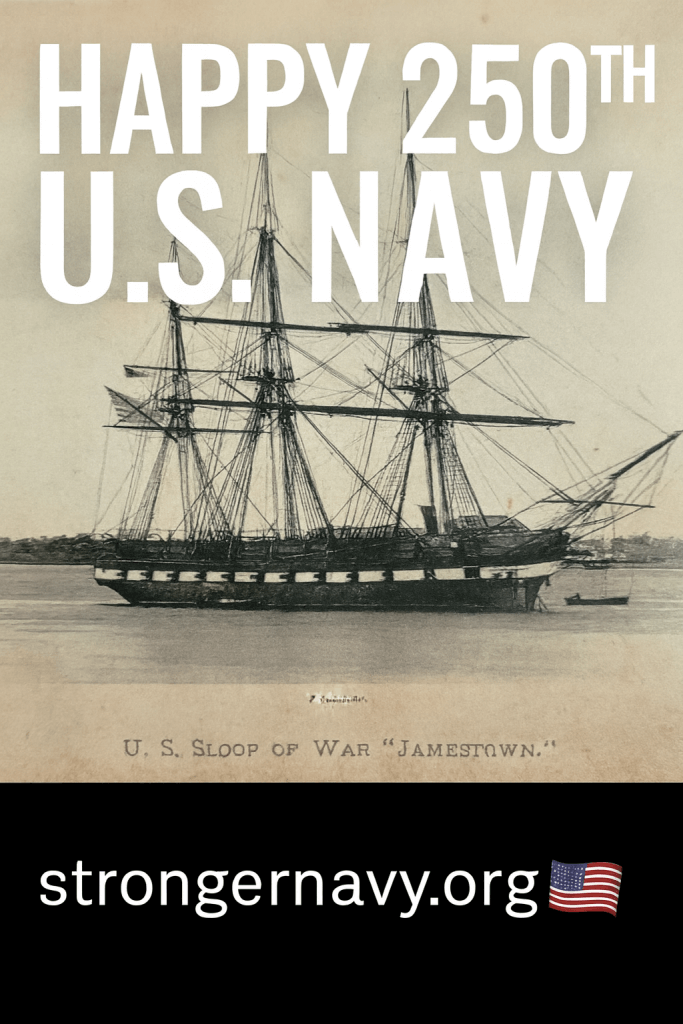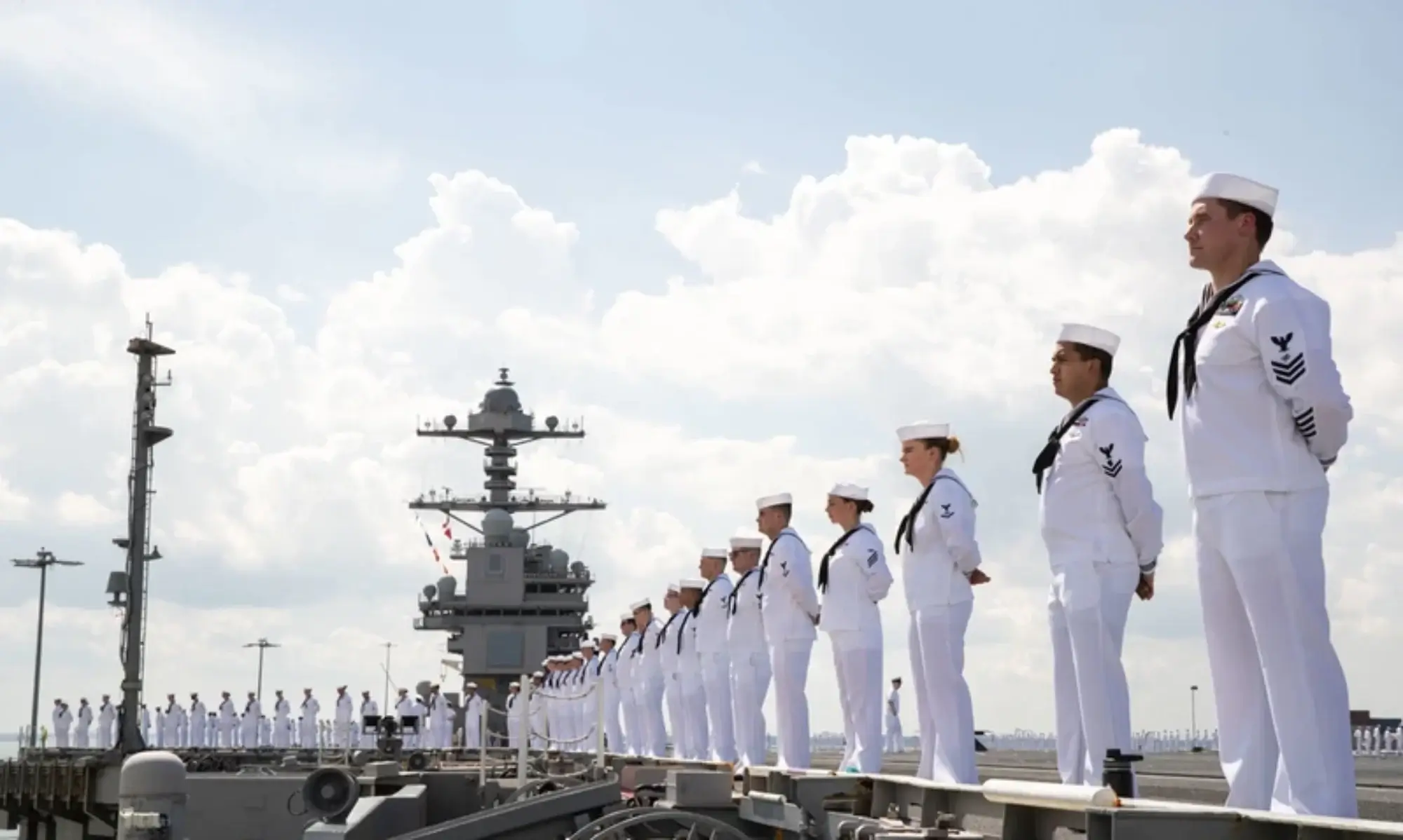

Somewhere in the South China Sea right now, a Filipino coast guard crew is preparing to head back to Second Thomas Shoal. They know what’s waiting—Chinese vessels that will shadow them, harass them, maybe hit them with water cannons or attempt to ram their boats.
They’re going anyway. They’re bringing supplies to their troops stationed on a rusting ship grounded on a reef that lies well within Philippine waters, recognized under international law.
They’re going because some things are worth standing up for. Because sovereignty matters. Because the rule of law at sea isn’t optional.
As the United States Navy marks its 250th anniversary, there’s no better example of why we exist than the U.S.–Philippine partnership—complicated, hard-won, and stronger than ever.
The Long Road to Partnership
Our relationship with the Philippines began painfully. After defeating Spain in 1898, America annexed the Philippines. Filipinos who had fought for independence resisted fiercely. The Philippine–American War was brutal—thousands of U.S. service members killed, tens of thousands of Filipino combatants lost, and many more civilians dead.
That legacy still shapes Filipino attitudes toward foreign military presence. Their wariness isn’t ingratitude—it’s rooted in history.
But World War II forged a different bond. Filipino and American forces fought side by side at Bataan and Corregidor. An estimated one million Filipino civilians died during the occupation. General MacArthur’s promise—“I shall return”— and the liberation that followed forged bonds in blood that endure.
After independence in 1946, Clark Air Base and Subic Bay Naval Base became crown jewels of U.S. power in the Pacific. During Vietnam, Subic Bay handled over 200 ship visits a month. These bases were economic engines but also symbols of resentment. By 1992, rising nationalism and environmental damage forced the U.S. military to leave.
For two decades, the alliance drifted. Then China changed the equation.
What Brought Us Back
Beijing’s growing assertiveness—seizing Scarborough Shoal in 2012, building militarized artificial islands, and harassing Filipino fishermen—forced Manila to turn again to Washington.
The 2014 Enhanced Defense Cooperation Agreement (EDCA) provided rotational access to Philippine bases without creating new U.S. installations—a distinction that matters for Filipino sovereignty. By 2023, the Philippines had opened nine EDCA sites, facing both Taiwan and the South China Sea.
Today, U.S. and Philippine forces conduct more than 500 joint activities each year. The Balikatan exercises now involve 14,000 troops in full-scale scenarios. New U.S. funding—$500 million in 2024—underscores how central this partnership has become.
The Risks We Should Acknowledge
No alliance is without risks.
The 1951 Mutual Defense Treaty could pull the U.S. into conflict over reefs or shoals. Americans could find themselves at war in disputes they barely understand.
Some argue we should fix our own maintenance backlogs and shipbuilding delays before investing abroad. Others warn our expanded presence could accelerate Chinese militarization instead of deterring it. And Philippine politics—sometimes turbulent—carry reputational risk for the U.S.
These are real concerns. But the alternative—a South China Sea dominated by Beijing, where international law collapses and small democracies are swallowed by larger neighbors—is far more dangerous.
The Bigger Picture: China’s Campaign
The Philippines is not the issue—it’s the line in the sand. Incidents at Second Thomas Shoal are part of a systematic campaign of Chinese aggression.
- Harassment of U.S. forces: Military lasers aimed at U.S. aircraft, fighters buzzing within feet of American planes, warships cutting across our destroyers.
- Rapid naval buildup: The PLA Navy is on track to field over 395 ships by 2025—outnumbering our Navy in its own region.
- Encirclement of Taiwan: Beijing rehearses blockades and missile strikes, preparing to coerce neighbors and challenge U.S. access.
- Cyber warfare: Groups like Volt Typhoon have penetrated U.S. power grids, water systems, and telecom networks. These intrusions aren’t hypothetical—they’re pre-positioning for conflict.
- Disinformation and espionage: From spy balloons to propaganda campaigns, Beijing is shaping the information battlefield.
The message is clear: this is not about a shoal, it’s about the balance of power in the Indo-Pacific.
Why Americans Should Care
- Freedom of Navigation: Nearly a third of global trade flows through the South China Sea. If Beijing can dictate access there, every sea lane becomes vulnerable.
- Economic Security: This isn’t just about faraway reefs. Those sea lanes carry the fuel that powers your car, the medicine in your cabinet, and the goods that stock your shelves. During COVID, Americans got a hard lesson in what happens when supply chains break—higher prices, empty shelves, and uncertainty.
If China controls those routes, disruption won’t be temporary. It would mean sustained leverage over the American economy: higher grocery and gas prices, layoffs in U.S. factories, and rising costs on everything from mortgages to credit cards.
Control of the South China Sea isn’t an abstract problem overseas. It’s leverage over the American economy—and your family’s budget.
- Alliance Credibility: Our 1951 treaty with Manila sends a message to allies everywhere—do U.S. commitments mean anything?
- Democratic Solidarity: Manila is modernizing, partnering with Japan and Australia, and standing up to pressure. Supporting them means supporting a network of democracies.
The Choice Ahead
For 250 years, the United States Navy has defended freedom of the seas. At its best, it has enabled smaller nations to prosper without massive militaries of their own.
Today, Filipino coast guard crews at Second Thomas Shoal embody the courage and loyalty of a steadfast ally. They aren’t backing down, even when outnumbered.
The question is whether America will do the same.
As we celebrate our Navy’s 250th anniversary, we face a choice:
Do we stand with democracies under pressure?
Do we defend international law at sea?
Do we maintain a Navy strong enough to prevent wars rather than fight them?
I know my answer. It’s why I write. It’s why Americans for a Stronger Navy exists. Because a strong Navy is what allows the world to prosper under the rule of law—not the rule of the biggest bully.
Fair winds and following seas.

